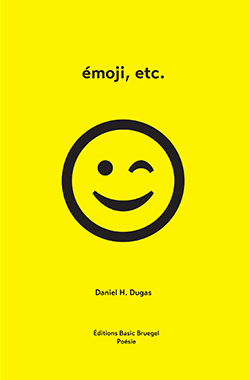Symposium d’art/nature (2016)
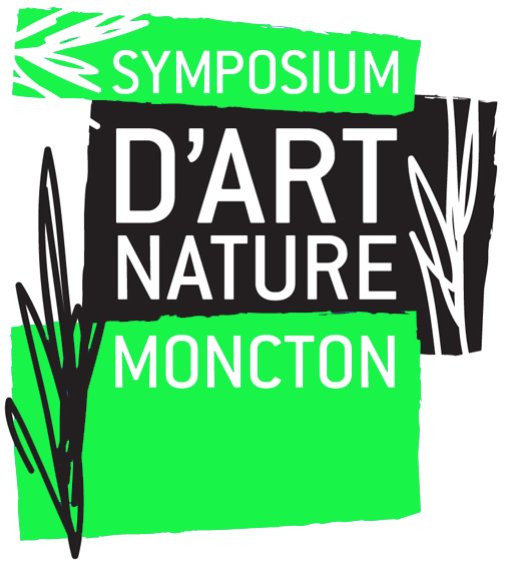
Valerie LeBlanc et moi sommes très heureux de faire partie du prochain Symposium d’art/nature qui se tiendra du 22 septembre au 2 octobre 2016 à Moncton, au Parc Écologique du Millénaire. Notre projet Visible / Invisible est un dialogue entre la matérialité du monde et la matérialité de l’espace.
Le Symposium d’art/nature : Moncton est une initiative du Département d’arts visuels et du Département de sociologie de l’Université de Moncton, de la Galerie d’art Louise et Reuben-Cohen et de l’Association acadienne des artistes professionnel.le.s du Nouveau-Brunswick.
Symposium d’art/nature – WEB
Symposium d’art/nature – Twitter
Symposium d’art/nature – Instagram
Symposium d’art/nature – Facebook
People Carrying Signs (2016)
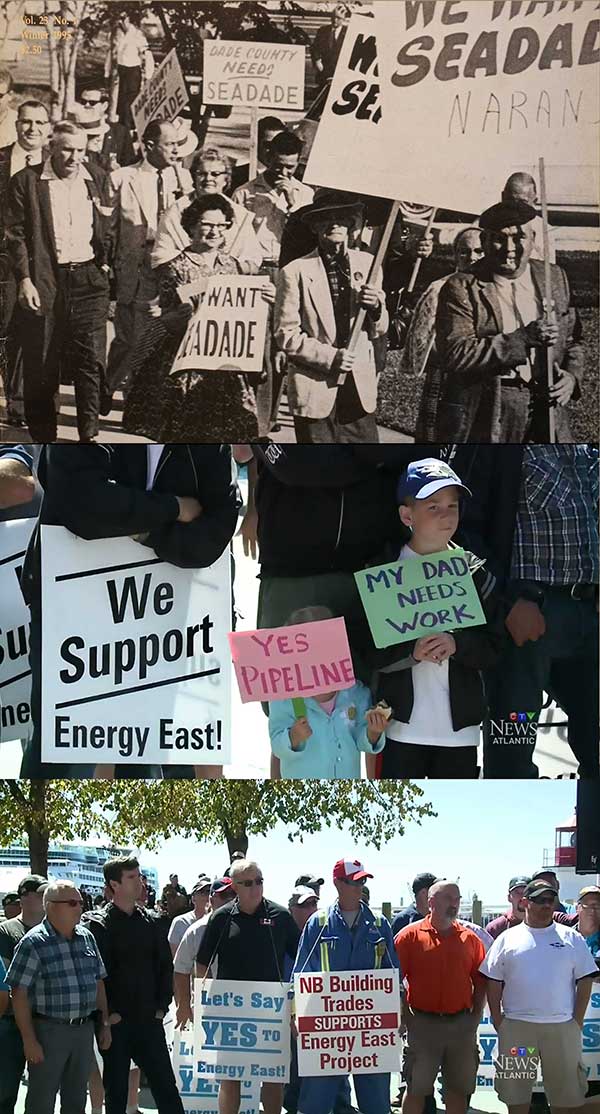
People carrying signs
Two images
of people carrying signs
supporting
a refinery
Wanting
a pipeline
Then it was Seadade
A chemical plant and an oil processing temple
along the shores of Biscayne Bay
Now it’s Energy East
A continental pipeline
to be laid across the land
over rivers and rivers and rivers
until it reaches the edge of the Bay of Fundy
Two images
of people carrying signs
of old folks and kids alike
The man with the cigarette in his mouth
and the woman with the pointy glasses
never saw their dream come true
But what about the YES PIPELINE kid
Will she be part of the sacrifice?
I don’t think
they understood then
or understand now
what is at stake
the gamble at play
The sheen of oil is making us mad
when we are willing to risk everything
to ease our pains
The sheen of oil is making us mad
when we believe that this endless tube of tar is not the Moloch
to which we will have to feed our own
Daniel H Dugas
August 12, 2016
Tales of two bays
The Bay of Fundy in Canada and Biscayne Bay in Florida are separated by more than 3,000 kilometers. At first glance, they seem to be worlds apart, but looking back into archival material, we realize that these two ecosystems have a shared history with industrialization. In this drama of progress we find two key players: K. C. Irving, one of Canada’s foremost 20th century entrepreneurs and Daniel K. Ludwig, shipping magnate and businessman with numerous companies, sometimes referred to as the American Onassis.
In 1959, Ludwig began buying acreages in South Dade, Florida to build a deepwater port and a refinery on a bayfront site east of Homestead Air Force Base. The project called Seadade was approved in 1962 and was supported by the Greater Miami Chamber of Commerce, but soon faced growing opposition from the Safe Progress Association (SPA). The SPA argued that Biscayne Bay, a warm and shallow, salt lagoon could be easily and irreversibly harmed by industrial pollution. Support for the project faded and in 1968 the American Congress passed the Biscayne National Monument Act, establishing a 96,000 acre preserve.
The industrial developments threatening Biscayne Bay are not isolated circumstances, they are happening everywhere in the world. The geological makeup of the Bay of Fundy in Canada seems to be diametrically opposite to the one of Biscayne Bay. Fundy is known to have the highest tides in the world whereas Biscayne Bay is a shallow semi-enclosed lagoon. But similarities emerge when we look at the relationship between humans and these ecosystems. The first parallel is between the historical players behind the refineries of Seadade and the Energy East project. Energy East would send its tar sands oil across a vast section of North America to Irving’s refinery in Saint John, New Brunswick. The narratives arcs of the two tycoons followed similar trajectories: Ludwig was born in 1887 and Irving the founder of Irving’s empire, was also born just about the same time, in 1899. Both magnates died the same year, in 1992. The two of them were involved in a wide range of holdings, shipbuilding, pulp paper and oil refinery among other things. Their fortunes were equally formidable. In 1982, Ludwig was #1 on the first Forbes 400 “Richest Americans” list, while Fortune Magazine in 1989 listed K. C. Irving as the 11th wealthiest man on earth.
There is a second connection between Biscayne Bay and the Bay of Fundy. Both locations have nuclear plants built on their shores. The Turkey Point Nuclear Generating Station was built just next to Biscayne National Park in 1973 while the construction of Point Lepreau in New Brunswick was started in1975. Both stations have had their share of safety problems in the past and are still plagued with ongoing problems today
The two bodies of water, on the Atlantic coast of North America, are magnificent. They are true natural wonders of the world. The question is why pristine areas are such magnets for big polluters? Why do they have to choose the most biologically diverse ecosystems to set up shop? If Biscayne Bay managed to avoid Seadade, can the Bay of Fundy do the same with Energy East? The two already have their own nuclear stations, their own safety, and cost management conundrums, it seems that this should be enough danger to deal with.
Daniel H Dugas
August 14, 2016
Notes
The Florida Experience: Land and Water Policy in a Growth State, Mix-up on South Bay, Luther J. Carter, RFF Press, New York, 1975p 157-192.
Daniel Ludwig, Billionaire Businessman, Dies at 95, The New York Times:
http://www.nytimes.com/1992/08/29/us/daniel-ludwig-billionaire-businessman-dies-at-95.html?pagewanted=all
K. C. Irving, 93, Industrial Tycoon Dominant in Canadian Province, The New York Times:
http://www.nytimes.com/1992/12/14/world/k-c-irving-93-industrial-tycoon-dominant-in-canadian-province.html
Study shows severe nuclear accident at Point Lepreau 40 times more likely than initially thought:
https://www.conservationcouncil.ca/study-shows-severe-nuclear-accident-at-point-lepreau-40-times-more-likely-than-initially-thought/
Evidence of salt plume under Turkey Point nuclear plant goes back years:
http://www.miamiherald.com/news/local/environment/article73233802.html
Nuclear energy, David Suzuki:
http://www.davidsuzuki.org/issues/climate-change/science/energy/nuclear-energy/
‘Nuclear power creates radioactive waste for which there is no accepted method of safely managing or storing. It is also prohibitively expensive.’
SAFE PROGRESS ASSOCIATION, INC. is a business entity formed in Florida and is a Domestic Non-Profit under local business registration regulations. Having the registration number 703668, according to the official registry, it is now Inactive. http://www.associationdatabase.org/safe-progress-association-inc
IMAGE CREDIT
Left: Pro Seadade demonstrators, January 23, 1963. South Florida History Magazine, Vol. 23, no 1, Winter 1995. / Middle: 18th-century depiction of the Moloch idol from Johann Lund’s Die Alten Jüdischen Heiligthümer (1711, 1738). / Right: Video still from CTV Atlantic ‘Pipeline arguments at NEB hearings’ by Ashley Blackford, August 8, 2016.
Impossible Colors (2016)
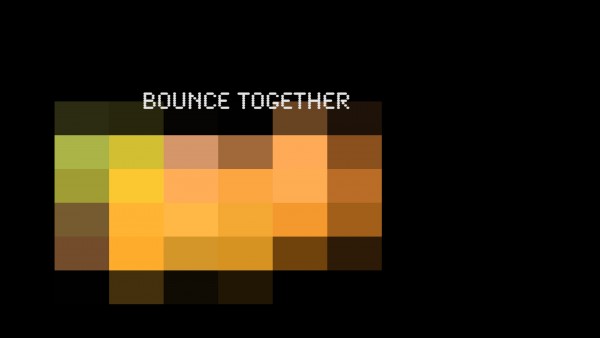
Impossible Colors
Reddish-Green and Yellowish-Blue are known as impossible colors or forbidden colors. Set side by side, it is said that the human eye could not see them, that their light frequencies would cancel each other, rendering them invisible. Researchers say that they can be seen if one looks ‘the right way’.
The boundaries between colors are akin to those between logic and dreams, they too can produce an impossible meaning if we mix them.
2016 Impossible Colors, HD video, 11 min 26 sec
(also designed as a 4 channels video installation)
– Red, HD video, 2 min 41 sec
– Green, HD video, 3 min 41 sec
– Bleu, HD video, 2 min 43 sec
– Yellow, HD video, 2 min 32 sec

Installation view
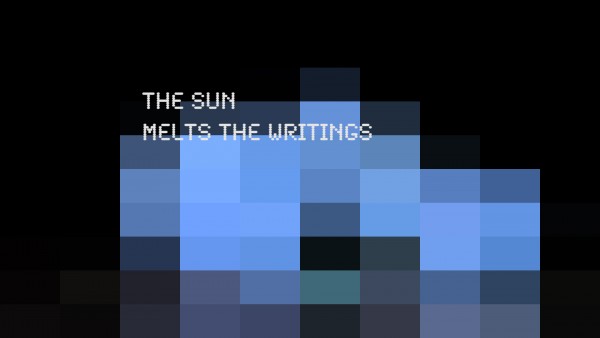
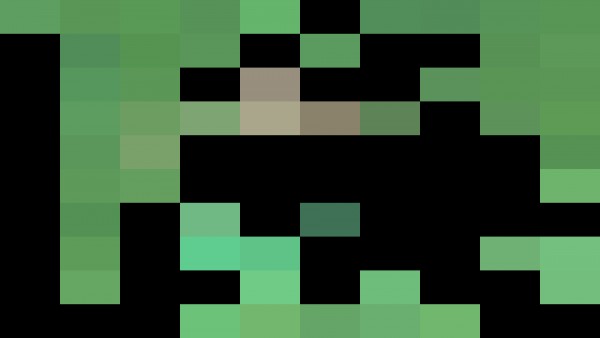
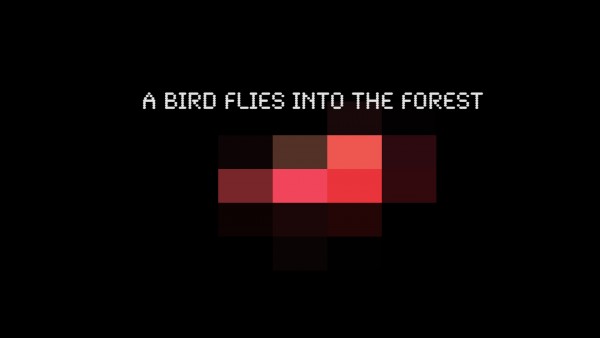
Citations gratuites – Caraquet (2016)
Samedi 6 aout 2016
9 h – 11 h Un poète au Marché avec Daniel H. Dugas. Interventions poétiques publiques Citations gratuites. //// Marché régional de Caraquet – Gratuit
Au marché avec Joanie Roy et Jonathan Roy
Photos : Valerie LeBlanc
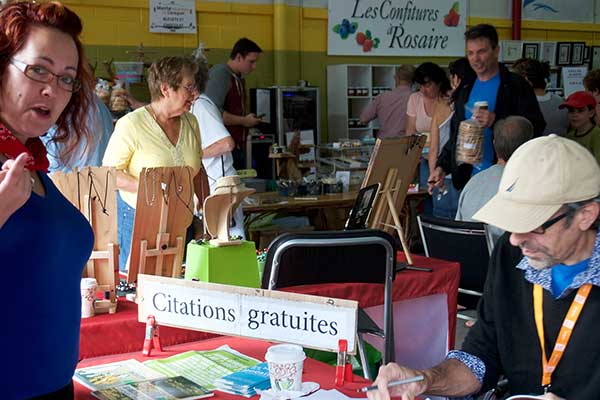
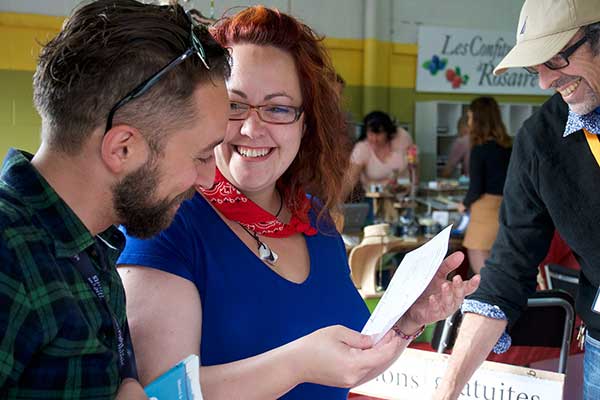


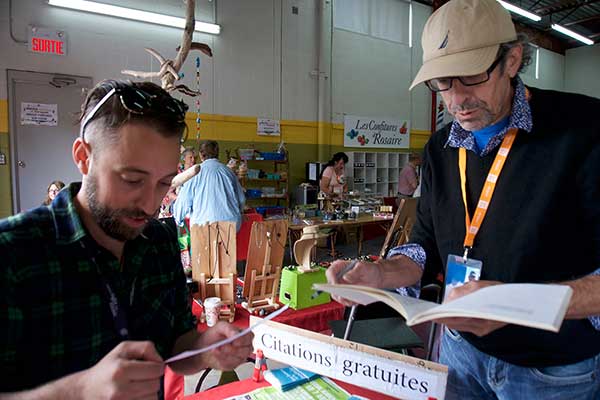


Leaving São Paulo (2016)
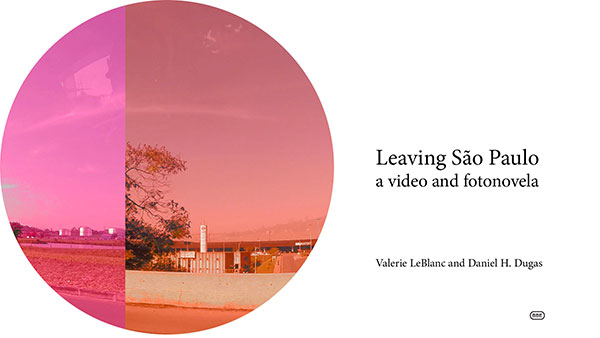
Valerie LeBlanc and I just finished Leaving São Paulo, a six-part video project. We also made a fotonovela with the photo stills as well as a playlist with the music. We have set up a website where you can see one of the videos (on Vimeo), hear all of the music (on Soundcloud) and read/look at the fotonovela (on ISSUU). Leaving São Paulo has been designed for both single-channel presentation and a six-channel installation.
https://leavingsaopauloblog.wordpress.com
Festival acadien de poésie (2016)
Quelle joie !

et mon horaire !
Jeudi 4 aout 2016
19 h Soirée de poésie Les poètes arrivent en ville avec Annie-Claude Thériault, Daniel H. Dugas, François Guerrette, José Acquelin, Joséphine Bacon et Paul Bossé. Présentation officielle des poètes invités à la 20e édition et célébration autour d’un vin d’honneur. //// Accompagnement musical : Jean-Marie Pit Benoît, Joanie Roy et François Landry.
Vendredi 5 aout 2016
20 h Soirée de poésie Voir Miscou et mourir… avec Annie-Claude Thériault, Daniel H. Dugas, Herménégilde Chiasson, Jean-Philippe Dupuis, Joanne Morency, Lise Gaboury-Diallo et Pierre Raphaël Pelletier. Accompagnement musical : Erwens. Dégustation de bière La Gougou de la Distillerie Fils du Roy //// Phare de Miscou (prévoir 75 minutes de Caraquet) – Billets : 25 $ (frais inclus)
Samedi 6 aout 2016
9 h – 11 h Un poète au Marché avec Daniel H. Dugas. Interventions poétiques publiques Citations gratuites. //// Marché régional de Caraquet – Gratuit
11 h Table ronde sous le thème Images transfigurées – défis et possibles des pratiques multimédiatiques avec les poètes et artistes multidisciplinaires Daniel H. Dugas, Jean-Philippe Dupuis, Paul Bossé et Simon Dumas. Animation: Herménégilde Chiasson. Présence spéciale des poètes François Guerrette et Lise Gaboury-Diallo, participants au spectacle Amérique-Acadie des Productions Rhizome. //// Galerie d’art Bernard-Jean – Centre culturel de Caraquet – Gratuit
14 h Au nectar des mots avec Daniel H. Dugas, Herménégilde Chiasson, Joanne Morency et Pierre Raphaël Pelletier. //// Nectar Cuisine Internationale (Prévoir 60 minutes de Caraquet) – Bathurst – Gratuit
Faire de la couleur un art du texte (2016)
FAIRE DE LA COULEUR UN ART DU TEXTE : UNE GÉOGRAPHIE D’INTENSITÉS DANS L’ESPRIT DU TEMPS/THE SPIRIT OF THE TIME DE DANIEL H. DUGAS – VALÉRIE MANDIA
12 juillet 2016 · par Astheure · dans Critique artistique.
Dugas, Daniel H. L’Esprit du temps/The Spirit of the Time, Sudbury, Prise de parole, 2015, 109 p.
Notre regard sur les rapports entre la peinture et la poésie est vraisemblablement teinté par la lecture qu’en a fait G. E. Lessing dans son Laocoon[1], insistant sur leur différence fondamentale : la peinture est un art de l’espace et la poésie un art du temps. L’Esprit du temps/The Spirit of the Time de Daniel H. Dugas, ouvrage bilingue publié en décembre 2015 aux Éditions Prise de parole, intéressera sans conteste les théoriciens et les artistes contemporains de l’art et de la littérature qui, comme lui, démentent cette lecture dichotomique. En effet, dans son plus récent opus, l’artiste multidisciplinaire acadien explore la peinture comme un art du temps et la poésie, comme un art de l’espace.
Ce qui retient mon attention quant à la création de ce « projet d’écriture sur la couleur » (p. 8) est précisément les différents rapports texte/image à l’œuvre dans un livre qui repense la lecture de la photo, de la couleur et de l’écoumène[2] d’une ville, soit la relation de l’humain à son milieu, à la lumière de la palette qui habite une communauté urbaine, plus précisément, à partir des différentes appellations que les fabricants de peinture donneraient aux couleurs de cette palette. Ainsi pensée, la matière colorante devient une sémantique vécue, c’est-à-dire une façon d’habiter les différents sens des mots qui servent à nommer ces couleurs. Elle « exprim[e] ce que nous sommes, maintenant, le Zeitgeist : l’esprit du temps » (p. 8), notre façon d’être dans le monde par la couleur, « chaque vie [étant] une couche, chaque décennie une couleur » (p. 15). En ce sens, chez Daniel H. Dugas, l’écoumène se transforme en atelier-monde.
De la couleur au texte
L’Esprit du temps/The Spirit of the Time rend compte du séjour du poète à Sydney en Australie lors d’une résidence d’écrivain. À l’aide des applications mobiles de différentes compagnies de peinture commerciale, sorte de cartes d’échantillons de couleurs, il a cerné les tons qui lui paraissaient « vibrer avec le plus d’intensité » (p. 8) dans les photographies prises au cours de son exploration du sud-est du continent australien. Les noms de couleurs inventoriés par les différents fabricants de peinture — haleine de lézard, douce biche, opulence — deviennent le punctum[3] de l’image, cet élément de surprise, ce détail qui surgit et qui brouille le sens de l’œuvre, ont été fédérateurs de sa démarche qui s’intéresse aux interactions entre les arts, entre les médias.
Plus ambitieux que ses autres titres où se rencontraient déjà sa poésie essayistique et ses images numériques, ce livre se distingue par sa complexité et sa richesse. Si les textes ne suscitent pas tous le même intérêt et s’il semble y avoir un déséquilibre dans l’aspect esthétique des photographies — de toute façon c’est le concept qui est intéressant et le fait que les photos s’apparentent davantage à celles d’un album de voyage ne fait que rendre de façon plus « instantanée » l’esprit de Sydney — les choix esthétiques et éditoriaux ont le mérite d’orienter notre lecture et notre compréhension du projet. Le papier mat de la version imprimée offre des teintes bien saturées et permet d’apprécier la « matière première » du texte : la couleur. Bien que le livre demeure accessible à un large
public grâce à l’édition électronique, l’édition imprimée, limitée à 50 exemplaires, permet une meilleure appréciation de ce « beau livre », décrit « à la fois [comme] un livre de photographie, un recueil de poésie et un essai lucide mais ludique[4] » que l’on pourrait aussi appeler, livre d’artiste. Peu importe la compétence du lecteur, la légende placée sous l’image intervient pour nourrir ses réflexions sur la façon dont s’est fait le passage de l’image au texte d’accompagnement. L’imbrication du textuel et du pictural se fait sur la double page. Les photos présentées sur la page de gauche sont accompagnées des appellations des deux couleurs sélectionnées dans l’image et de la source respective de chacune (Benjamin Moore, Ralph Lauren, Behr, Earthpaint, etc.), de « marqueurs » — mots-clés ayant orienté la lecture de l’image et l’écriture du texte — et d’une pastille de couleur qui engage un regard assidu, encourageant le lecteur-spectateur à localiser dans l’image la couleur contenue dans la pastille. C’est le cas, notamment, du texte « Enfer sépia » côtoyant une photo qui, au premier coup d’œil, n’apparaît qu’en noir et blanc. Où se terre la couleur rouge présentée dans la pastille? Où se cache « [l]es rivières de sang » (p. 33) annoncées dans le texte? En regardant la photographie de plus près, l’œil découvre de minuscules taches rougeâtres. Qui aurait cru que dans cette représentation d’une scène obscure d’abattoir se dissimulait un coucher de soleil à l’horizon, nom de la couleur rouge A31-6 donné par la compagnie Olympic (p. 32)?

Les rapports texte/image
La plupart du temps, le texte décrit l’image. Son rapport à la photo en est donc souvent un d’imitation : « des super yachts / amarrés / aux super quais » (p. 27), un « feu de camp » (p. 35), « [d]ans le parc du jardin botanique / les statues des quatre saisons » (p. 37), « une couverture d’un VHS » (p. 41). Parfois, le texte explique une photo plus abstraite et la recontextualise dans l’espace : « les murs » du Blackwattle Café (p. 15), « une boîte à biscuit » (p. 45), « [d]eux gouttes de vin » (p. 63).
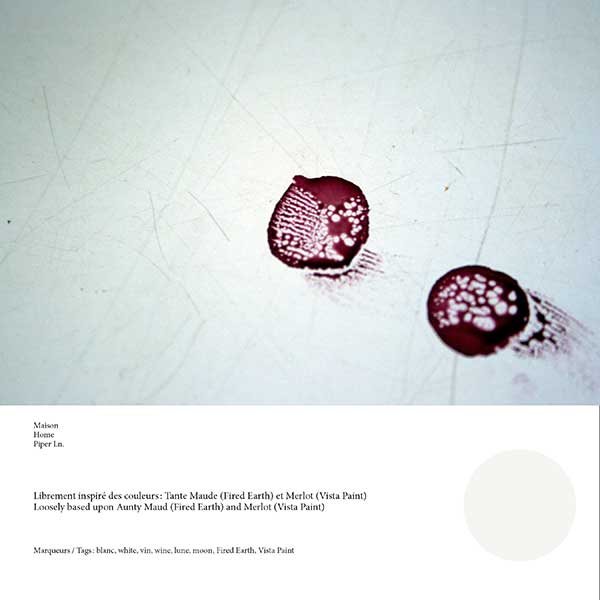
D’autres fois encore, il complète un objet coupé par le cadrage de l’image. À titre d’exemple, « Le ciel de ciment », accompagnant la photographie de « [s]tatues d’enfants » dont on ne voit que la partie inférieure, parachève la sculpture : « Le garçon / grièvement blessé / tient un parapluie » (p. 68-69). En nommant cet accessoire, le texte dirige le regard vers des détails de l’image que tout le monde n’aurait pas décelés : le parapluie est bien présent dans l’image, accoté au mur d’un édifice.
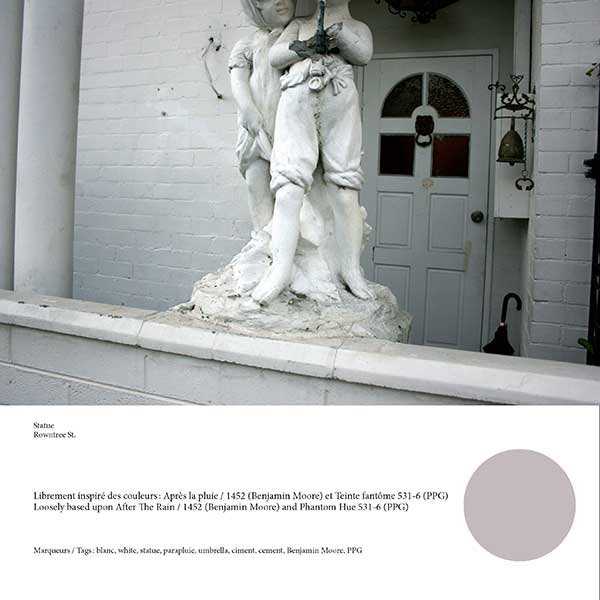
Dugas explore toutes les possibilités que lui offrent les couleurs écrites. « Chihuahueño » (p. 51), le poème le plus ludique du recueil, devient presque inintelligible, sinon surréaliste. Le poète trace le portrait d’« un petit chien tout à fait adorable » à l’aide des noms de couleurs inventés par différentes compagnies de peinture. Si l’on avait à recomposer le portrait pictural de l’animal d’après ce texte, le chihuahua se métamorphoserait drastiquement :
« Tamia rayé autour des cheville / Cabane en bois sur les côtés / un peu de Moineau sur le visage / Peau de mouton sur sa tête / un soupçon Déesse des pêches / un grain de Vacher là-haut / sans oublier les incontournables / Sucre d’érable / Maison d’écorce Mark Twain. » Toutes ces expressions pour dire les différentes nuances compromettent l’image, la recréent, ouvrent l’imaginaire du lecteur. Le poète montre ainsi que « [le mot] est porteur de fictions, de fabrication imaginaires » (p. 9).

Une limite élastique
L’Esprit du temps/The Spirit of the Time de Daniel H. Dugas explore la limite élastique entre le langage et la couleur qui, traditionnellement, « fait apparaître de manière exemplaire les limites du discours[5] ». Déjà, en 1998, l’auteur annonçait son désir de lire le temps dans la peinture : « lis-moi l’avenir / dans les nuances des couleurs / qui dansent / dans les pots des vidanges d’huile / lis-moi la peinture des maisons / qui s’écaillent / et qui sèchent au soleil[6] ».
[1] G. E. Lessing, Du Laocoon, ou des limites respectives de la poésie et de la peinture , traduit de l’allemand par Charles Vanderbourg, Paris, Antoine-Augustin Renouard, 1802 [1766].
[2] Terme utilisé par le géographe Augustin Berque.
[3] Notion développée par Roland Barthes dans La chambre claire : note sur la photographie, Paris, Cahiers du cinéma, 1980.
[4] Prise de parole, dossier L’Esprit du temps/The Spirit of the Time.
[5] Bernard Vouilloux, De la peinture au texte : l’image dans l’œuvre de Julien Gracq , Genève, Librairie Droz, 1989, p. 50.
[6] Daniel H. Dugas, « Lis-moi l’avenir », La limite élastique, Moncton, Perce-Neige, 1998, p. 76.
À propos…
Crédit photo : Éditions Prise de parole.
À la croisée de la littérature et de la peinture, les recherches de Valérie Mandia ont pour champs d’intérêt les rapports entre les deux paroles artistiques ainsi que la figure de l’auteure-artiste. Ayant étudié les arts visuels et la littérature à l’Université d’Ottawa et terminé en 2012 une maîtrise en création littéraire, Valérie Mandia prépare aujourd’hui une thèse de doctorat (FQRSC) où elle réfléchit sur l’intermédialité à l’œuvre chez Leonor Fini.
BILLIE Magazine (2016)

We are very happy to have contributed to the issue. The layout is beautiful!
The article is “reproduced with permission, billie spring 2016 issue”.
Beaverbrook Art Gallery launches second issue of BILLIE: Undercurrents in Atlantic Canadian Visual Culture
Fredericton, NB, June 1, 2016 — The Beaverbrook Art Gallery is pleased to announce the second issue of BILLIE: Undercurrents in Atlantic Canadian Visual Culture. This issue will be available at the Gallery shop, and at outlets around the region and across Canada through Magazines Canada.
In its second issue, BILLIE explores Inside/outside as its theme. A cross-section of writers cover a wide range of artists’ work in relation to Atlantic Canada’s place in the rest of the world, and the world’s place in the development of the visual arts of the region. It is a meditation on comparisons, influences, exchanges and relationships between the local and the global in Atlantic visual arts.
About BILLIE:
BILLIE: Undercurrents in Atlantic Canadian Visual Culture was launched in Fall 2015, in conjunction with the re-launch of the Marion McCain Exhibition of Contemporary Atlantic Art. Taking its name from the late Marion McCain, whose lifelong nickname was “Billie,” the journal explores what is below the surface of contemporary art in Atlantic Canada and the diverse and complex narratives flowing from the region’s particular histories, peoples and landscape.
Subscription and purchase information:
For more information on how to purchase a copy or subscription, please contact the Beaverbrook Art Gallery by phone at (506) 458-0974 or by emailing billie@beaverbrookartgallery.org.
La Galerie d’art Beaverbrook lance le deuxième numéro de sa revue « BILLIE : Undercurrents in Atlant
Fredericton, N. B., le 1er juin 2016 – La Galerie d’art Beaverbrook est fière d’annoncer le lancement du deuxième numéro de sa revue « BILLIE : Undercurrents in Atlantic Canadian Visual Culture ». Ce numéro sera en magasin à la boutique de la Galerie et chez divers marchands de la région et à travers le Canada par l’entremise de Magazines Canada.
Dans ce deuxième numéro, BILLIE explore le double thème de l’intérieur et de l’extérieur. Divers auteurs abordent les œuvres d’un grand éventail d’artistes et, de ce fait, situent la région atlantique canadienne sur la scène mondiale tout en discutant de la place du reste du monde dans les arts visuels de la région. Il s’agit d’une réflexion sur les comparaisons, les influences, les échanges et les liens entre ce qui est local et ce qui est mondial dans les arts visuels de l’Atlantique.
À propos de BILLIE :
« BILLIE: Undercurrents in Atlantic Canadian Visual Culture » a été lancée en automne 2015, en parallèle au renouvellement de l’Exposition Marion McCain d’art contemporain de la région atlantique. La revue BILLIE, ainsi nommé d’après le surnom de la regrettée Marion McCain, explore ce qui gît sous la surface de l’art contemporain de la région atlantique ainsi que les récits divers et complexes qui émergent des histoires, des peuples et des paysages particuliers de cette région.
Souscriptions et achat:
Pour plus d’informations sur comment acheter un exemplaire ou une souscription, veuillez svp. contacter la Galerie d’art Beaverbrook, par téléphone au (506) 458-0974, ou par courriel à billie@beaverbrookartgallery.org.
FILE SÃO PAULO 2016 – venha passar do limite
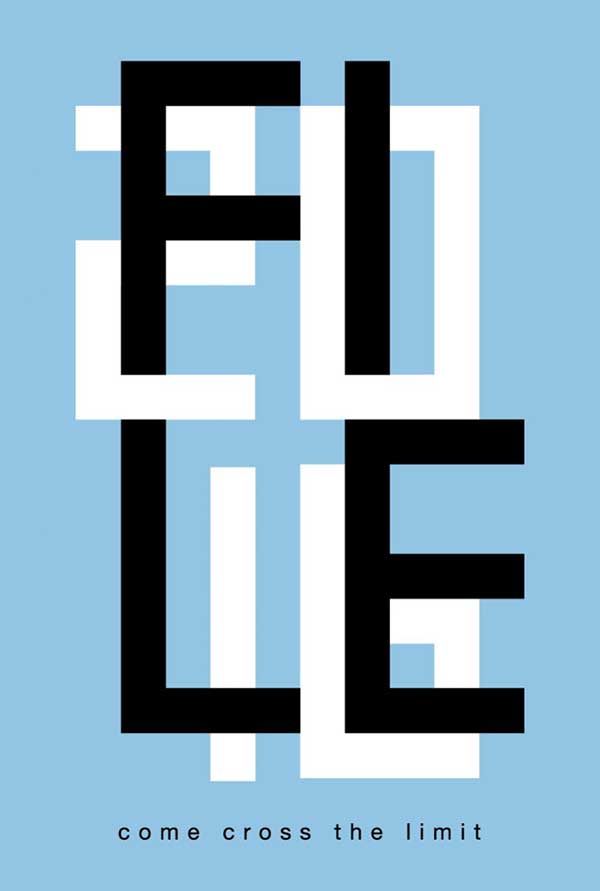
Je suis très content de faire partie de ce festival!
VIDEOARTE
O FILE Videoarte apresenta este ano um recorte da recente produção poética que articula o vídeo e as tecnologias atuais, extrapolando os limites entre eles e evidenciando como os dispositivos técnicos modificam nossa forma de perceber as coisas ao nosso redor. Com quarenta e quatro obras de mais de vinte países, buscamos investigar como se dão as imbricações entre nós e as imagens (com seus dispositivos), e entre nós e os espaços (físicos, digitais, internos e externos).
Curadoria: Fernanda Albuquerque de Almeida
VIDEO ART
FILE Video Art presents this year a cutout of the recent poetic production that combines video and current technologies, breaking the barriers between them and showing how the technical devices change the way we perceive things around us. With forty-four works from over than twenty countries, we seek to investigate how the imbrications between us and the images (with its devices) and between us and the spaces (physical, digital, internal and external) happen.
Curatorship: Fernanda Albuquerque de Almeida
1 Alfredo Ardia & Sandro L’Abbate – Studio N.1 – Itália
2 Anna Vasof – Down to Earth – Áustria
3 Atelier Monté – The Art of Deception – Holanda
4 Baku Hashimoto & Katsuki Nogami – EYE – Japão
5 Beatriz Minguez de Molina – Finishing Your Dreams – Espanha
6 Cole Lu – But, You Know, It’s Often All I Want – Estados Unidos
7 “Con.Tatto: Francesca Leoni & Davide Mastrangelo” – Androgynous – Itália
8 Constanza Meléndez – Untitled (1990) – Alemanha
9 Cristina Pavesi – Giallo – Itália
10 Daniel Alexander Smith – Sea Change – Estados Unidos
11 Daniel H. Dugas – Apples and Oranges – Canadá
12 Daniel Wechsler – Dust – Israel
13 Das Vegas (Vygandas Simbelis) – STRATA – Suécia
14 David Clark – The Cinema of Sweat – Canadá
15 Diran Lyons – Keep The Clubs Swingin’ (#Obeezy | Dr. Dre Remix) – Estados Unidos
16 Dustin Morrow – Treetops – Estados Unidos
17 Edu Rabin & Renata de Lélis – Onda – Brasil
18 Fabio Scacchioli & Vincenzo Core – Bang Utot – Itália
19 Fabio Scacchioli & Vincenzo Core – Scherzo – Itália
20 Francesca Fini – Dadaloop – Itália
21 Hakan Lidbo – Tightrope – Suécia
22 Hakeem b – Jane’s Electronic Poem – França
23 Jaret Vadera – On Kings and Elephants – Estados Unidos
24 Jeroen Cluckers – Tears in Rain – Bélgica
25 Laura Focarazzo – The Uninvited – Argentina
26 Liliana Farber – The Blue Marble – Israel
27 Liu Chang & Miao Jing – INFINITE – China/Estados Unidos
28 Marcell Andristyák – Roadlovers – Hungria
29 Michael Pelletier – Coordinated Movement – Holanda
30 Paganmuzak – N3 – Itália
31 Paulina Rutman – Fall – Chile
32 Peter Whittenberger – What’s the Worst That Can Happen? – Estados Unidos
33 Peter William Holden – The Invisible – Alemanha
34 “pixels+fibre: Myrto Angelouli & Fiona Gavino” – (My) Space I – Austrália
35 Przemek Wegrzyn – Lullaby – Polônia
36 Przemek Wegrzyn – Home Movie – Polônia
37 Przemek Węgrzyn – Security Measures – Polônia
38 Shaun Wilson – Uber Memoria XIX – Part VII – Austrália
39 Silvia De Gennaro – Travel Notebooks: Venice, Italy – Itália
40 Silvia De Gennaro – Travel Notebooks: Barcelona, Spain – Itália
41 Stuart Pound – Song Lines – Inglaterra
42 Stuart Pound – Coming & Going – Inglaterra
43 Stuart Pound – Six Portraits of Clara Schumann – Inglaterra
44 Vera Sebert – Panorama Panic Botany – Áustria
http://file.org.br/highlight/file-sao-paulo-2016-come-cross-the-limit/
Apples and Oranges (Maçãs e Laranjas)
http://file.org.br/videoarte_2016/daniel-h-dugas/?lang=pt
“Apples and Oranges” (Maçãs e Laranjas) examina a questão das barreiras. É um vídeo sobre liberdade e cativeiro, sobre a vida ao ar livre e o confinamento, sobre uma prisão que existe ao lado de um Parque Nacional.
Dichotomy in Black and White (2015-2016)
Dichotomy in Black and White is the pictorial collision of individually born projects juxtapostioned into new scenarios. Valerie LeBlanc and I have set up Dichotomy to breathe new life into previously created works. On a monthly basis, images once captured, filed and sometimes forgotten, will be brought back from our archives to face each other, to share in the light.
The project can be seen on JUiCYHEADS
*Taking a break July 13, 2016
Dichotomy is taking a pause. Thank you for following the series.
* Septembre 9, 2018
Dichotomy in Black and White has migrated to the following address: https://dichotomyinblackandwhite.wordpress.com/
Daniel H. Dugas
Archives
Blogroll
- A.I.R. Vallauris
- ACAD
- Adobe additional services
- Adobe Creative Cloud
- AIRIE
- Amaas
- Amazon Author Central
- ARTothèque
- Australian Poetry
- Basic Bruegel
- Bitly
- CCCA
- CDBaby
- Cycling 74
- Dissolution
- Éditions Prise de parole
- Emmedia
- eyelevelgallery
- FAVA
- Festival acadien de poésie
- Festival FRYE Festival
- FILE – Electronic Language International Festival
- Freeware list
- Fringe Online
- Galerie Sans Nom
- Gotta Minute Film Festival
- Instants Vidéo
- JUiCYHEADS
- Kindle Direct Publishing
- Klondike Institute of Art and Culture
- La Maison de la poésie de Montréal
- La Maison de la Poésie et de la Langue française Wallonie-Bruxelles
- Laboratorio Arte-Alameda
- Le Centre Jacques Cartier
- Liberated Words
- Maison Internationale de la Poésie – Arthur Haulot
- MediaPackBoard
- Miami Book Fair International
- Monoskop
- Mot Dit
- NSCAD University
- Paved Arts
- PoetryFilm
- Portail des auteurs du Nouveau-Brunswick
- RECF
- Revue Ancrages
- Salon du Livre du Grand Sudbury
- Sculpture Space
- Subtropics.org
- Sydney college for the arts
- The Centre for Contemporary Canadian Art
- The New Gallery
- Trevigliopoesia
- tumbler-documents
- V Tape
- Valerie LeBlanc
- VideoBardo
- Void Network-Κενο Δίκτυο
Categories
- #covidpoèmes
- Advertisement
- AIRIE
- Ancrages
- anthology
- Anthropocene
- Architecture
- Around Osprey
- art
- Article de presse
- arts visuels
- audio
- Australian Poetry
- Basic Bruegel Editions
- Book
- book fair
- Cafe Poet Program
- Ce qu'on emporte avec nous
- Citations gratuites
- Collaboration
- commentaire
- commentary
- Compte rendu
- conférence
- Conservation Foundation of the Gulf Coast
- COVID-19
- Critique littéraire
- culture
- Daniel Dugas
- Design
- Édition Michel-Henri
- Éditions Perce-Neige
- Éloizes
- Emmedia
- emoji etc | émoji etc
- Environnement
- essai
- essay
- Everglades
- Exhibition
- festival
- Festival acadien de poésie
- Festival Frye Festival
- FIPTR
- Flow: Big Waters
- Fundy
- Habitat
- installation
- Instants Vidéo
- interactivity
- journal
- JUiCYHEADS
- Kisii
- L'Esprit du temps
- laptop
- Leaving São Paulo
- lecture
- Livre
- logos
- Magazine
- Miami Book Fair
- Moncton 24
- novel
- OASIS
- oil spill
- perception
- performance
- Photo
- poésie
- Poetic Licence Week
- Poetry
- politics
- politique
- press
- Prise de parole
- Revue Ancrages
- salon du livre
- sculpture
- Sculpture Space
- sound
- Souvenirs
- Spirit of the Time
- Style & Artifacts
- Symposium d'art/nature
- talk
- television
- The New Gallery
- Uncategorized
- Valerie LeBlanc
- vidéo
- vidéopoésie
- Videopoetr/Vidéopoésie
- videopoetry
- visual arts
- What We Take With Us
- youth literature







